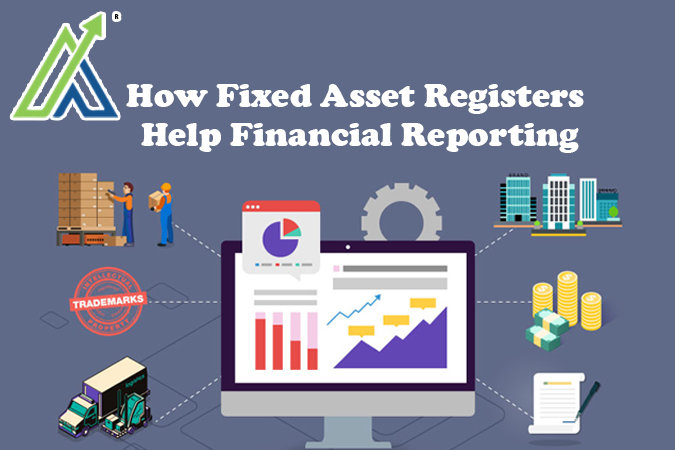Managing money is tricky. Keeping track of fixed assets—things like buildings, machinery, and equipment—is crucial. In India, Fixed Asset Registers (FAR) play a big role in making financial reporting clear and efficient. Here’s how FAR helps, with simple examples to show its impact.
Accurate Depreciation Calculation
FAR helps calculate depreciation. Depreciation is the loss in value of an asset over time. With a detailed FAR, organizations ensure depreciation is calculated accurately based on when the asset was bought, how much it cost, and how long it will last.
Example: A company buys a machine for ₹10,00,000 with a 10-year life. The FAR helps calculate an annual depreciation of ₹1,00,000, ensuring accurate financial records.
Compliance with Accounting Standards
In India, companies must follow accounting standards like Ind AS. FAR helps comply by keeping clear records of asset acquisition, disposal, and value changes, ensuring financial reports meet regulatory standards.
Example: A business follows Ind AS 16 for equipment. The FAR ensures all revaluations and impairments are recorded correctly, staying within the standard.
Financial Transparency
Transparency in financial reporting builds trust. FAR offers a clear view of an organization’s assets, showing how they’re used and their impact on financial health. This transparency helps during audits and assessments.
Example: During an audit, the FAR shows detailed information about office equipment, including purchase dates and depreciation status, letting auditors verify asset values accurately.
Capital Budgeting
Capital budgeting decisions rely on accurate asset information. FAR gives a clear picture of existing assets, helping organizations plan for future investments and replacements effectively.
Example: A company planning to expand its production line uses the FAR to check the state of current machinery and see if new equipment is needed.
Asset Management
Effective asset management means tracking assets from purchase to disposal. FAR keeps detailed records, ensuring assets are used efficiently and disposed of when they’re no longer useful.
Example: A logistics company tracks its fleet using FAR, ensuring timely maintenance and disposal of outdated vehicles, optimizing operations.
Financial Analysis
Understanding fixed assets is key for financial analysis. FAR provides detailed insights into asset categories, helping analysts evaluate an organization’s financial position and performance accurately.
Example: Analysts use FAR data to assess the proportion of tangible assets in a company’s total assets, aiding in investment and creditworthiness evaluations.
Risk Management and Insurance
Accurate fixed asset records are crucial for risk management and insurance. FAR helps assess the insurance coverage needed for assets, ensuring the organization is protected against potential losses.
Example: An IT company uses the FAR to determine insurance coverage for its servers and computer equipment, ensuring all assets are insured against damage or theft.
Questions to Understand Your Ability
Ques1: What’s the main job of a Fixed Asset Register (FAR)?
- Managing employee salaries
- Keeping track of fixed assets
- Recording daily business transactions
- Monitoring stock levels
Ques2: How does a Fixed Asset Register help with depreciation?
- By tracking inventory
- By detailing each asset’s purchase date, cost, and lifespan
- By managing payroll
- By recording sales figures
Ques3: Which accounting standard in India deals with property, plant, and equipment?
- Ind AS 2
- Ind AS 16
- Ind AS 24
- Ind AS 32
Ques4: How does a Fixed Asset Register improve financial transparency?
- By hiding asset details
- By showing a clear picture of assets and their use
- By tracking employee attendance
- By managing customer data
Ques5: Why is a Fixed Asset Register crucial for capital budgeting?
- It helps manage payroll.
- It shows existing assets for planning future investments.
- It tracks daily sales.
- It manages marketing budgets.
Conclusion
In financial reporting in India, Fixed Asset Registers are essential. They ensure accurate depreciation calculations, compliance with accounting standards, financial transparency, efficient capital budgeting, streamlined asset management, facilitated financial analysis, and effective risk management. By maintaining a comprehensive FAR, organizations achieve greater accuracy and transparency in their financial reporting, strengthen their financial health, and build trust.
FAQ's
A Fixed Asset Register (FAR) is a record that tracks all the fixed assets a company owns, like buildings and equipment, including their purchase date, cost, and depreciation.
The FAR is very important because it makes sure that financial standards are followed, that there is transparency, that capital planning works, that asset management is streamlined, and that risks are managed well.
The FAR gives detailed info on each asset, like purchase date and cost, which helps calculate depreciation accurately over its life.
The FAR helps companies follow standards like Ind AS 16 by keeping clear records of asset acquisition, disposal, and value changes, making sure financial reports meet the rules.
The FAR shows a clear view of a company’s assets, how they’re used, and their impact on finances, which is key during audits and reviews.
By giving a full view of current assets, the FAR helps companies make smart decisions about future investments and replacements.
The FAR helps figure out the insurance needed for assets, making sure the company is covered against losses like damage or theft.
The FAR provides detailed info on assets, helping analysts evaluate a company’s financial position and performance accurately, which is crucial for investment and credit evaluations.

